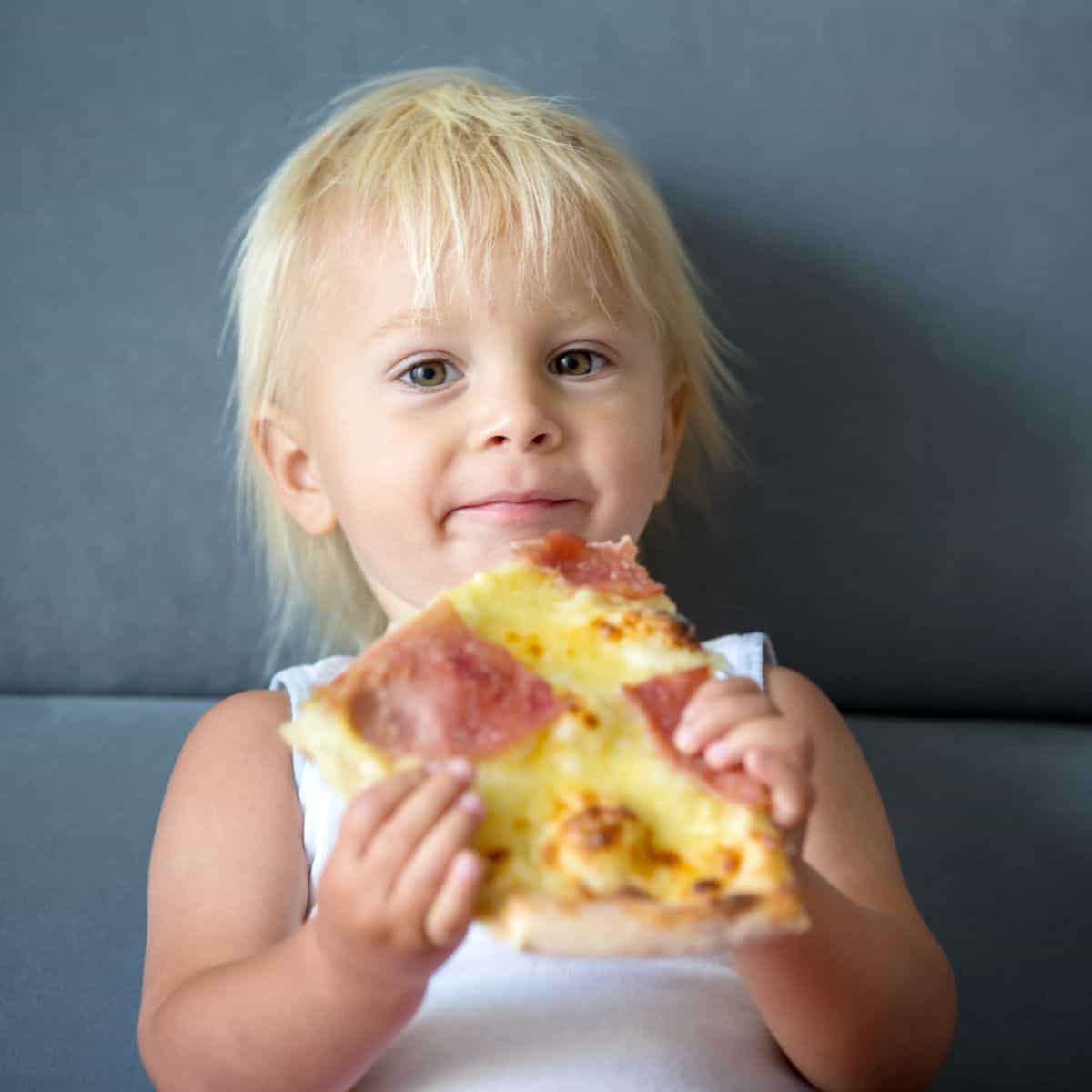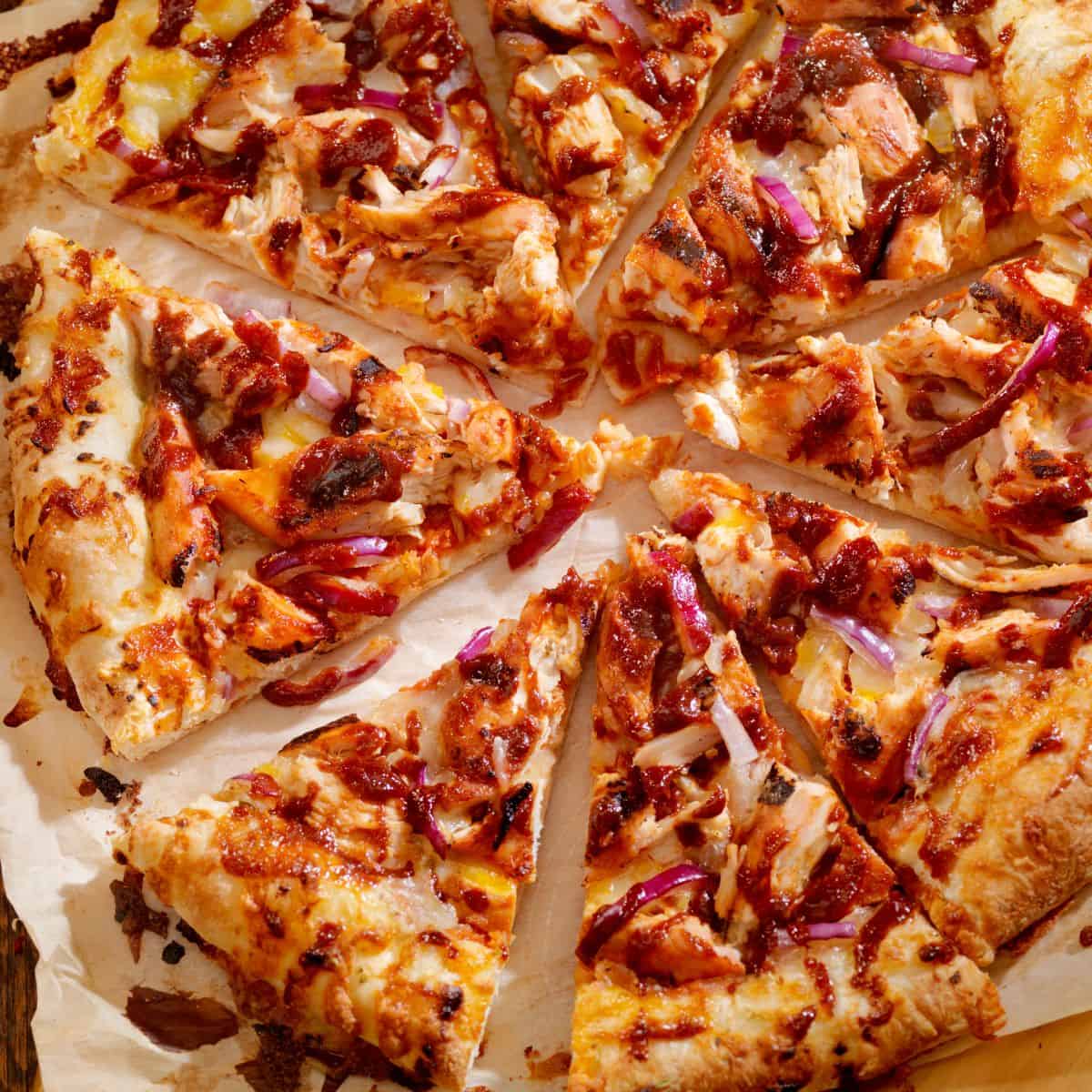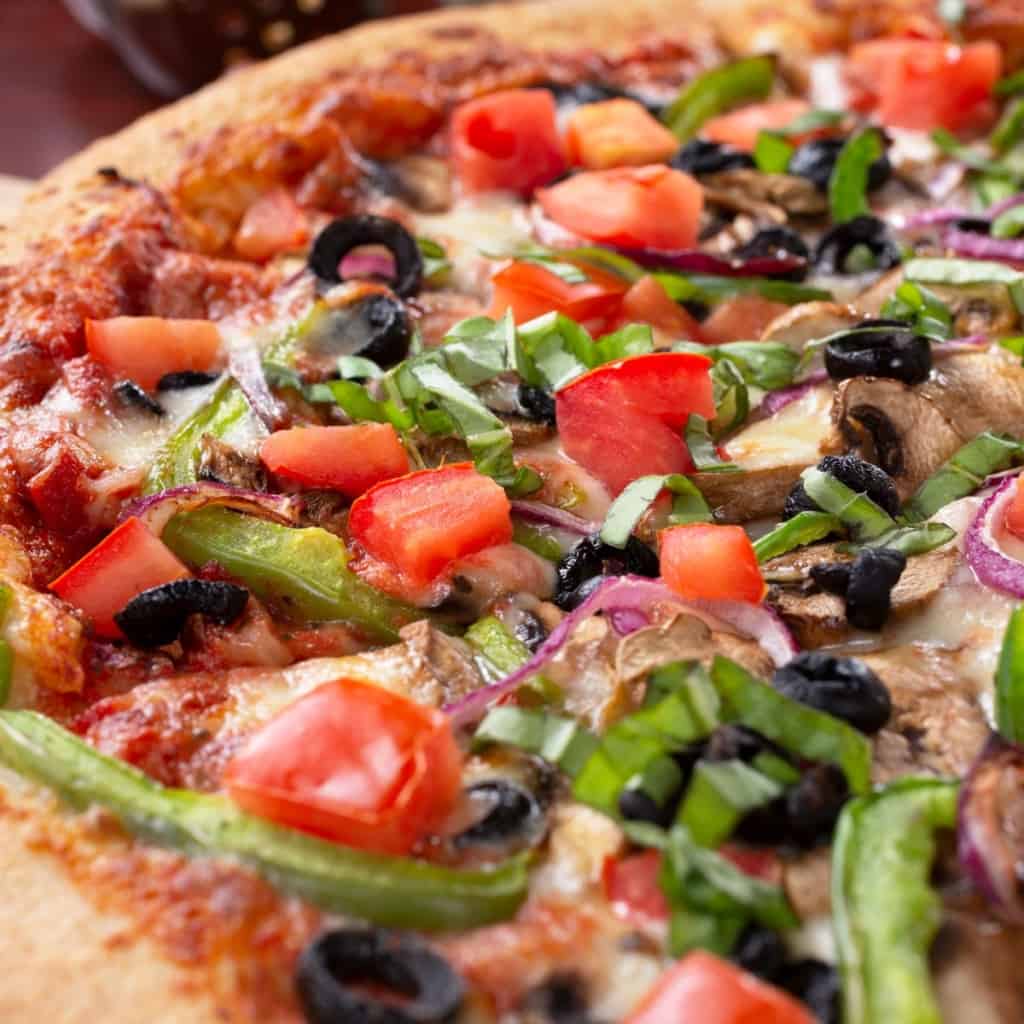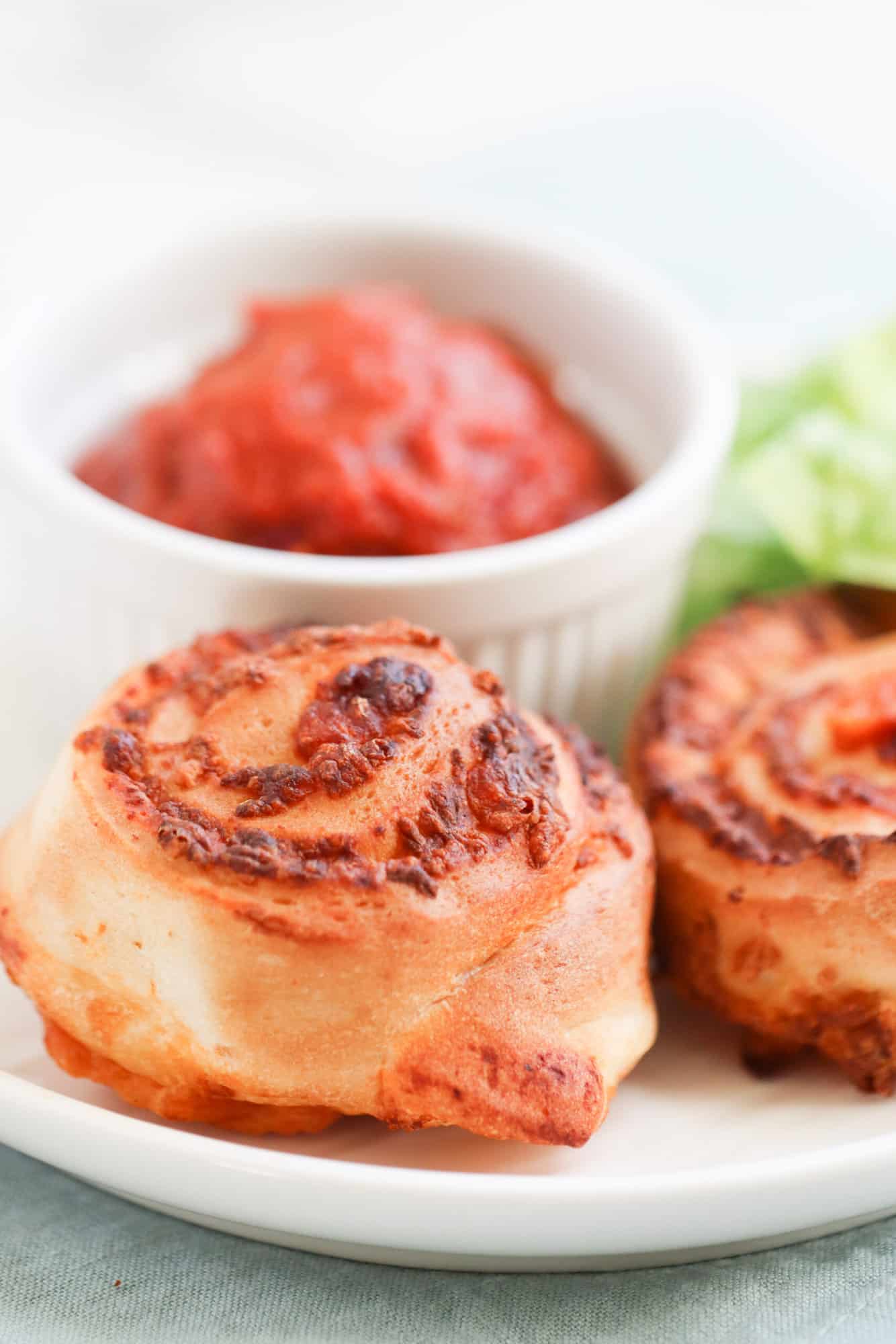Pizza As A Balanced Meal: Healthy Sides & Ways To Serve Pizza For Kids
Jun 07, 2023, Updated Apr 01, 2024
This post contains affiliate links. Please see our disclosure policy.
Who doesn’t love pizza?

I’m pretty sure it’s universally satisfying. And if you leave off the pineapple, it just might be the most crowd-pleasing meal on the planet. (No comment on my stance on pineapple on pizza because this isn’t my first day on the internet!! Consider me Switzerland!)
The only downside of pizza is that, if you were raised with a strong diet culture influence in your kitchen, pizza might conjure up some negative connotations. And to be honest, I think most of us were raised with a strong diet culture influence in the kitchen.
So today, I want to dig into the nutritional pros and cons of pizza. (Yes, there ARE pros!) And share some easy ways to optimize its nutrition, like serving healthy sides for pizza, whenever it’s on the menu.
Table of Contents
- Is pizza healthy for you?
- Macronutrients in pizza
- Micronutrients in pizza
- Understanding functional foods
- So, is pizza healthy for you?
- Swaps that make pizza a little more nutritious
- #1 Add some iron-rich protein
- #2 Add different types of cheese
- #3 Add veggies
- #4 Choose the right sauce
- #5 Try alternative crusts
- #6 Add a nutritious side dish
- New and fun ways to serve pizza
Is pizza healthy for you?
Pizza can have a reputation for being greasy and “unhealthy.” Or for being “just” carbs and fat. But I want us to take a closer look. Because at the end of the day, pizza is food. And just like every other food, it’s a combination of the macronutrients and micronutrients in the ingredients that, when combined, make pizza.

Macronutrients in pizza
Pizza is always made up of crust, sauce, cheese, and toppings. And it almost always includes all 3 macronutrients (carbs, fat, and protein). The carbs in pizza mainly come from the crust and sauce. The fat mainly comes from the cheese. And protein is found in the cheese, too, as well as any meat toppings you choose to add.
Micronutrients in pizza
Most pizzas feature dairy in a big way. Cheese is usually the star (at least for toddlers!). And dairy products have a good dose of vitamins and minerals in them—namely calcium and some B vitamins.
Tomatoes are another featured ingredient in pizza. (Don’t worry, I won’t tell your toddler!) And some of the components that make up tomatoes (like lycopene) have what we call “functional properties.” This means research has found them to be positively linked to a decreased risk of cancer and heart disease! That means lycopene is a great antioxidant.
Diets high in antioxidant-rich foods are associated with a lower risk of chronic oxidative stress-related diseases like cardiovascular diseases, cancer, and deaths from all causes.
So while yes, pizza has carbs and fat, it’s not only carbs and fat!
See Related: Healthy Fats and Oils for Kids
Understanding functional foods
We used to think that food was pretty much “just” energy (which it is) plus a combination of protein, carbs, and fat (which it also is). But now we know that foods do other things as well. And we call these other things their functional properties.
Protecting us against diseases, lowering our risk of certain diseases, promoting antioxidation in the body, and contributing to growth and development are just a few of the functional benefits we know about! Talking about the additional things that foods do in our bodies gives an added dimension to ANY food we are looking at and breaking down.
I say all this to back up and better explain my point above about how pizza isn’t “just” carbs and fat, even though I know it may seem that simple at first!
The bottom line is that we have to give our food more credit! And the same goes for our bodies. There are lots of components in our foods and they work together to promote good things going in our bodies.
So, is pizza healthy for you?
Is pizza the ultimate “health food”? Whatever THAT means?? Maybe not.
It can be higher in saturated fat than we may want for a single meal. (At least regularly!) And it can also run high in sodium.
But there are still nutritional benefits within each component of pizza, especially if you control the ingredients. And when you combine them, they give you what can be a super balanced—and kid-friendly—meal!
Swaps that make pizza a little more nutritious
These are some tips I use to boost the nutritional value of pizza even more at my house, to help make sure my family gets the most balanced meal possible.
#1 Add some iron-rich protein
I’m not talking about pepperoni and other processed meats. I know those are delicious, but are best served sparingly. My top recommendation is diced chicken—if it makes sense with your pizza. (BBQ chicken is a well-loved, high-protein and iron-rich combo.)
See Related: The Best Sources of Iron for Toddlers

#2 Add different types of cheese
Fresh mozzarella and ricotta have less sodium and are still great sources of protein and fat! If you have a picky or particular toddler, you can start by adding just a little bit of one of those cheeses, and slowly increase how much you use as you decrease the other cheeses.
Important cooking note – fresh mozzarella is high in water content, and we do NOT want a soggy pizza. You’ll want to drain it for about 15 minutes before adding it to your pizza.
#3 Add veggies
Throw on some of your favorite veggies for flavor, fiber, and variety. Bell peppers, onions, mushrooms, olives, and even broccoli can sneak by on a pizza relatively easily. If you have a picky eater, you can start with a tiny amount of a veggie they typically like, or let them choose their veggies. I prefer to dice them small and cook the veggies before adding them to pizza.

#4 Choose the right sauce
Pizza sauce IS different from pasta sauce. It’s a bit thicker, and usually has a more mild taste. I highly recommend Rao’s brand, which is made from simple ingredients – tomatoes, carrots, onion, olive oil, salt, oregano, basil, and garlic!
Some brands add sugar, which is unnecessary for a delicious pizza sauce, in my opinion!
#5 Try alternative crusts
Lots of brands are coming out with different types of crusts (Banza makes a chickpea crust and Caulipower makes a cauliflower crust I actually like!), so if you’re looking to change it up, why not try one out? Chickpea crusts are my pick when I need a bread alternative because they cook nicely and they’re loaded with protein and fiber.
But please hear me say that you do not need to healthify pizza by using alternative crusts! Different crusts are great IF you’re looking for some more protein, fiber, or veggies per bite. Or if you need a gluten-free option. If not, a regular crust is completely fine!
Here are some of my favorite frozen pizzas made with a variety of crusts (you’ll find these plus all of my other favorite shortcut options in my Meal & Snack Survival Guide!):

#6 Add a nutritious side dish
…OR ignore all those tips and just serve regular old pizza with a side salad, a side of veggies, a side of fruit, or even some 100% juice. This way, the meal is a little more complex and complete.
Pizza night in my house usually looks like a slice of cheese pizza, a fruit cup (the kind packed in 100% juice), some baby carrots, and a tired mom eating the kids leftovers while standing over the sink.
You can also add another side dish if you’re feelin’ fancy!
There are some great side dish ideas for kids and toddlers in this post.
New and fun ways to serve pizza
One of my favorite nutrition tips for kids is to add variety!
This is one of the best ways to keep them flexible so you don’t get stuck with only ONE specific brand of frozen pizza that they’ll accept.
This works whether your kids will eat anything you serve OR if they’re picky—because you can either serve something totally new or take a meal they know and love (like pizza) and switch out just one ingredient, as I’ve done here!
Bagel, pita, or tortilla pizza
If you have a picky eater, keep the toppings they love and just swap their usual crust for a bagel, pita, or tortilla. Make sure that whatever you choose is something they’ve had before so it’s not a huge surprise.
Here’s some complete-meal inspiration from—you guessed it!—my Meal & Snack Survival Guide! (Screenshot this free meal idea if it’s one you think your family would eat!)

Air fryer pizza rolls

This homemade air fryer pizza roll recipe is an easy way to serve something that your child (even your picky eater) will eat! It’s delicious, doughy pizza but in cinnamon roll form. I have yet to meet someone who doesn’t want to eat that!!
Serve these with a side of hummus and veggies, and some fresh berries!
Make your own pizza
This is a fun dinner option that kids usually love! I love that it gets them engaged in the “making” stage of eating because this involvement makes them more likely to eat their food after. (Keep this tip in mind if you have a picky eater. It works for sandwiches, smoothies, tacos…and any other food, too!)
Need easy meals your kids will eat?
(And you actually have time to make??)
My Meal & Snack Survival Guide is FULL of throw-together recipes, kids’ nutrition shortcuts, and better convenience foods. I made it to help you survive the never-ending cycle of meals and snacks!
If you’re doing more “surviving” than “thriving” in the kitchen this season…it’ll save you.














